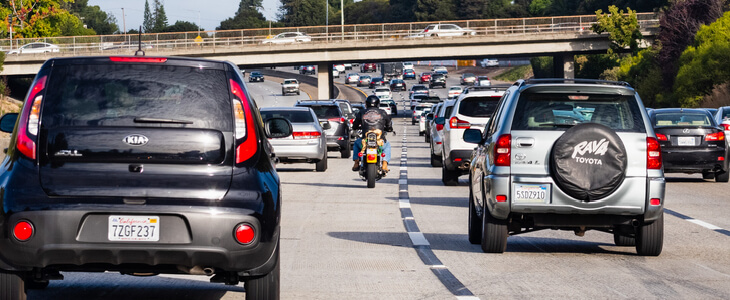Lane change accidents have always been a problem on U.S. roads. A driver merges into a lane or turns into a lane and there is already a vehicle right there. Despite the advances in car safety technology such as blind spot monitors or sounds to alert a driver to someone in an adjoining lane spot, the problem persists. This could be due to a number of reasons, but it is most often due to distracted driving our outright careless driving.
Lane change accidents can lead to significant property damage and serious injury. You have a legal right to pursue damages against a driver whose negligence leads you to suffer harm, but how do you determine who is at fault in a lane change accident? This is an important question to know the answer to as it can have a serious impacts on your right to be compensated for the damages you may have suffered in the accident.
Determining Fault in a Lane-Change Accident
Being aware of your surroundings and being constantly vigilant is the key to keeping yourself and others safe on the roads. This will involve using a car’s safety features such as your mirrors and it will also involve checking your blind spots before doing things like turning or changing lanes or merging into traffic. While you can take great steps toward avoiding lane change accidents on the road, defensive maneuvers and vigilance may not be enough to protect yourself from someone else’s recklessness on the road.
Lane change accidents are often caused by drivers who do not use their turn signal to notify other drivers of a maneuver they are about to make. They can be caused by drivers who fail to check their mirrors and their blind spots. Sometimes, a lane change accident may be made by a driver trying to quickly cross multiple lanes of traffic all at once. Engaging in reckless driving maneuvers or negligently operating your vehicle by not taking standard safety precautions before changing lanes may mean you are at fault for causing a lane change accident. Sometimes, multiple drivers may be at fault for causing a lane change accident.
In determining who is at fault in a lane change accident, a thorough investigation into the facts and circumstances surrounding the accident will be critical. Evidence of driver negligence or recklessness will be key in supporting an assertion that they are at fault for causing the accident. Fault is not always clearly identified and it could easily turn into a he said, she said, situation. In determining what actually happened in the accident and who is at fault for causing an accident, evidence such as witness testimony will be key. Physical evidence will also be important. The road debris, nature of the damage to either vehicle, and the positioning of the cars on the roadway can help reconstruct the accident to determine fault.
Philadelphia Personal Injury Attorneys
If you have been involved in a lane change accident, the personal injury team at Cooper, Schall & Levy can help you. We will help fight for your right to pursue full and fair compensation for the damages you have suffered at the hands of a negligent driver. Contact us today.


